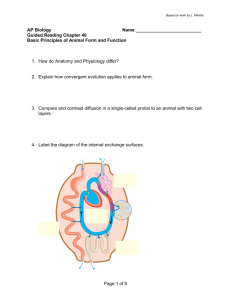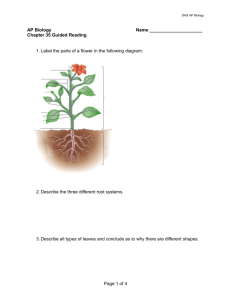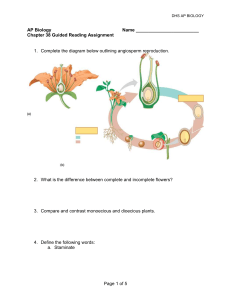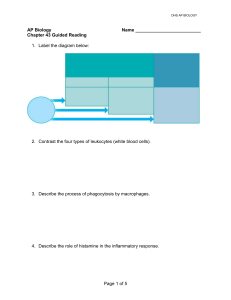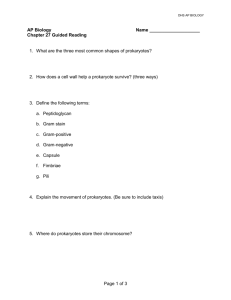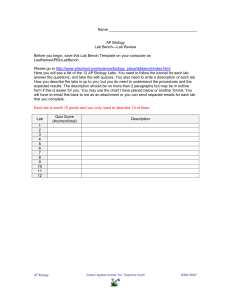Chapter 40 Guided Reading
advertisement
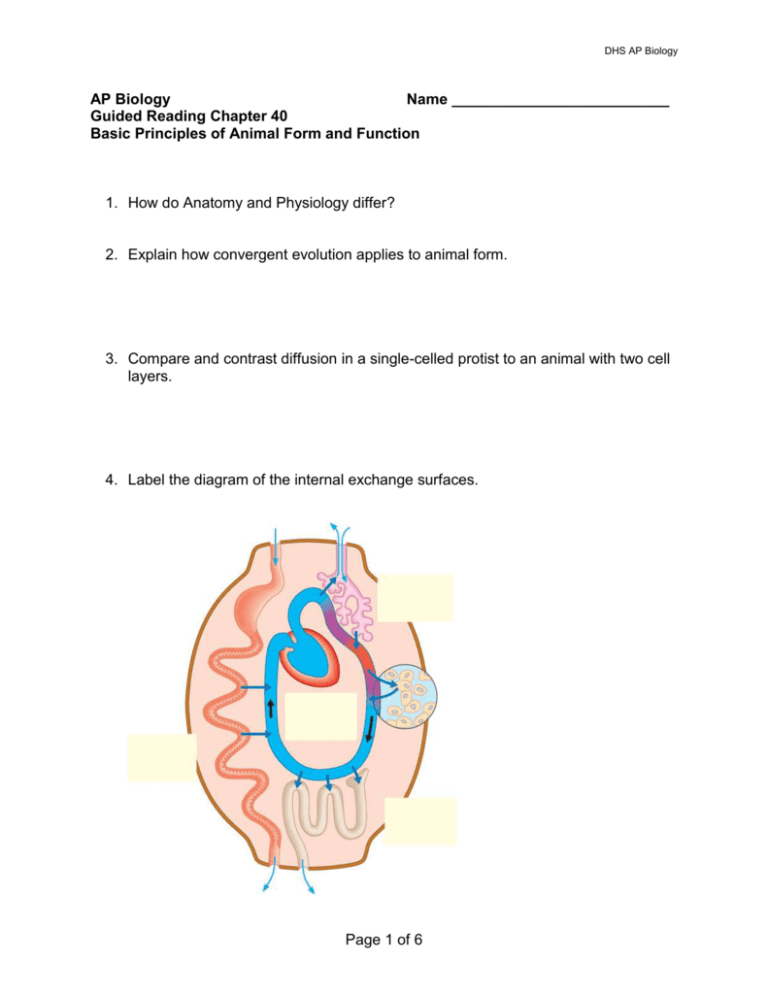
DHS AP Biology AP Biology Name __________________________ Guided Reading Chapter 40 Basic Principles of Animal Form and Function 1. How do Anatomy and Physiology differ? 2. Explain how convergent evolution applies to animal form. 3. Compare and contrast diffusion in a single-celled protist to an animal with two cell layers. 4. Label the diagram of the internal exchange surfaces. Page 1 of 6 DHS AP Biology 5. Define the following: a. Tissues- b. Epithelial TissuesGlandular epitheliaMucus membranesSimple epitheliumStratified epitheliumCuboidal cellsColumnar cellsSquamous cellsc. Connective TissuesCollagenous fibersElastic fibersReticular fibersFibroblastsMacrophagesd. Muscle Tissues- e. Nervous Tissue- 6. How are the tissues arranged into organs and then into organ systems? Explain this using the digestive system as an example. Page 2 of 6 DHS AP Biology 7. Label the diagram explaining bioenergetics in animals 8. What is metabolic rate and how is it determined? 9. Explain the three influences on metabolic rate. Page 3 of 6 DHS AP Biology 10. Based on figure 40.10, what is an energy budget and how does it vary in four different animals? 11. Define and explain the following: Regulators- Conformers- Negative feedback- Positive feedback- Thermoregulation- 12. Compare and contrast ectotherms and endotherms. 13. There are 5 categories of adaptations that help animals thermoregulate. Describe each one and how they work in your own words. Insulation- Circulatory Adaptations- Page 4 of 6 DHS AP Biology Cooling by Evaporative Heat Loss- Behavioral responses- Adjusting Metabolic Heat Production- 14. Name three of the organ systems that help with thermoregulation by complex negative feedback mechanisms. 15. Define the following: a. Acclimatizationb. Stress-induced proteinsc. Heat-shock proteinsd. Torpore. Hibernationf. Estivationg. Daily torpor- Page 5 of 6 DHS AP Biology 16. Complete the diagram below: 17. Torpor involves a __________ in what metabolic rates. Page 6 of 6
